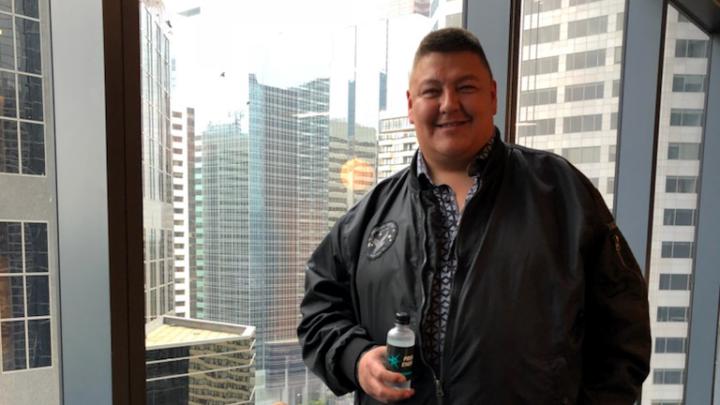Canada’s energy sector is raising the standard of living for many Indigenous people, says an Indigenous oil and gas contractor who employs dozens of people in Alberta and B.C. under the banner of environmental sustainability.
Boomer Desjarlais, 46, a member of the Sturgeon Lake Cree Nation in northern Alberta, began building Top Notch Oilfield Contracting in 2004 with his wife Judy, who is chief of the Blueberry River First Nation northwest of Fort St. John.
They started off with one employee, $1,500 and a big dream.
Depending on industry activity, the award-winning heavy earthworks company now employs between 60 and 250 people – roughly 20 per cent are Indigenous. The company strives to bridge the gap between First Nations and industry, a step forward in reconciliation, he says.
When it comes to understanding the truth about Indigenous communities and Canada’s energy sector, Desjarlais says “I tell people to turn off the TV first thing and do some research.” He says there are “outsiders” actively working against Canada’s energy sector.
“The media won’t communicate the rest of the story where Indigenous people are going on holidays and buying campers. They are putting their kids in college and sports programs,” says the father of three.
Desjarlais’ success is helping raise up others in his community. Back in 2018 he cut a deal with natural gas producer Petronas Canada to buy an $842,000 road grader. The company promised to keep the machine busy if Desjarlais employed an Indigenous operator. Several people applied for the position.
“One guy stood out above the rest,” he says. “He’s been working for us on the grader since 2018. He’s a preferred guy. Petronas worked with us by having a consultant who was willing to train him up and follow him around until he was golden. Today the kid is thriving. He’s got a young family … doing great.”
Desjarlais, a board member of the Indigenous Resource Network, grew up in and around the energy sector. He lived in Swan Hills, Alta. for eight years where his father worked as a supervisor on service rigs. The family moved to Slave Lake, then to Red Earth Creek where his father operated an oilfield trucking company.
Desjarlais says the experience prevented him from living through social problems on reserve.
“I grew up in oil towns. Never did grow up on the reservation until later in life,” he says. “We homesteaded a place on the reserve out in Sturgeon Lake Alberta. But my father kept his business running up there, and my mother and I moved to Sturgeon Lake where my mom became the chief. She was the second woman chief in Canada.”
Desjarlais said both his parents worked hard to provide for him and his sister. By the time he was 13, he’d traveled to numerous U.S. states, including several trips to Disneyland. When the family moved to the reserve, they started a 275-head cattle ranch away from the townsite. They raised around 50 horses and eventually around 120 head of bison.
Thanks to his mother, starting at age 13 Desjarlais began working as a pipefitter’s helper. He went to high school for one year.
“I actually dropped out at grade 10 and just went to work full-time,” he says.
Taking after his father, Desjarlais’ trajectory as an energy sector worker and business owner has allowed him to provide improved quality of life for his family. One of his daughters is a legal assistant. The other is a nurse and mother. His 16-year-old son is interested in owning his own company.
Desjarlais is determined to tell the story of Indigenous people lifting themselves out of poverty through sustainable resource development.
“There are a bunch of different companies out there that want to help get the word out,” he said.
The unaltered reproduction of this content is free of charge with attribution to Canadian Energy Centre Ltd.
